Which screwdriver is better, cordless or corded: description, advantages and disadvantages
It's only a matter of time before you purchase a power tool for tightening screws for your home workshop.You just need to select the model and design of the tool. But most future tool owners cannot choose a power system: cordless or corded screwdriver. Why is one scheme better than another and does it make sense to overpay for ratings and batteries?
The content of the article:
Brief description of corded screwdrivers
The design is very similar to that of an electric drill. For home use, you can use a screwdriver or a drill, everything is the same. Difference between corded screwdriver and an electric drill just in the gearbox.
For a corded screwdriver:
- high torque;
- it is possible to adjust the speed;
- perform reverse - change the direction of rotation to the opposite.
The drill has only one rotation speed. Since the drill shank is always cylindrical, the chuck has increased precision and is clamped on a turnkey basis.
Corded screwdrivers usually have a quick-release chuck that can be easily tightened by hand without any additional tools. Its accuracy is lower, but it is not intended for precision drilling. The ability to install small-diameter drills is necessary in order to make a hole and then screw a self-tapping screw into it.
The corded screwdriver uses a 220 W motor with low current consumption. Essentially, this is a housing with a reduction gearbox and a high-speed commutator motor. About the same as in mixers or coffee grinders.
The engine is designed for short-term activation for 5-10 seconds. This is approximately the amount required to tighten the self-tapping screw. Then a pause for installing the next screw into the bit, during which the gearbox and motor cool down. Therefore, as a rule, there are no problems with overheating, even if you work with the tool all day.
If you try to drill like a drill for several minutes, the brushes will burn out first, then the gearbox bearings and finally the winding of the screwdriver motor. Few corded screwdrivers are capable of working for a long time under heavy load, so you need to take breaks.
In battery tools, the gearbox is much larger and is almost always made of wear-resistant cast iron and steel. The engine is usually commutator, with a massive copper winding of 10-15 A. A replaceable battery is installed in the lower part, it can be in the form of a flat block or a clip.
With this tool you can drill without problems, but also with interruptions. If you need to constantly drill metal, then it is better to take a model with a brushless motor. This screwdriver will cost more, but its capabilities are much greater than those of conventional models.
Advantages of corded screwdrivers
Using a circuit powered from a 220 V household network has pros and cons. There are more advantages, and they clearly outweigh the negative aspects:
- the design of the screwdriver is simpler and more reliable;
- the tool can be used for an unlimited time;
- The performance of the screwdriver is not affected by temperature and type of fastener;
- In the event of a breakdown, repairs will be cheaper than with battery models.
A corded screwdriver also has less weight due to the lack of batteries. After purchasing the tool, you will need to purchase an extension cord and a set of bits. There will be no other costs.
In addition, corded models of power tools are much safer than cordless ones. If the wiring remains intact, then the screwdriver can be used even in rain, severe frost, heat, or high humidity. A corded screwdriver can be dropped from a roof or a ladder, and this small incident will not affect the performance of the tool in any way.
Another significant plus is that corded power tools are much easier to repair. Moreover, some operations, such as replacing an electric motor, can be performed independently.
Disadvantages of corded screwdrivers
The only downside that should be noted is the relatively small torque. On average it is 18-20 N*m. That is, you can only tighten small and relatively short screws with a corded screwdriver. For lining walls with plasterboard, the capabilities of a screwdriver will be sufficient, but for filing boards on the ceiling or roof sheathing, it will not.
In addition, many owners of screwdrivers who previously used cordless versions of the tool are often irritated by the power cord. In their opinion, this is the biggest drawback of network models.
The cord is not just inconvenient to use. It significantly limits the ability to use a screwdriver. It is impossible to take a tool to the dacha if there is no electricity and a generator in the house.Connecting a mains screwdriver through an extension cord longer than 20 m leads to a voltage drop on the wiring, and, accordingly, the motor does not turn the gearbox as powerfully as if the screwdriver were plugged directly into the outlet.
According to many owners, a corded screwdriver is just a “younger” version of a cordless one. It costs less and can be used for any operations, and in everyday life it can even replace a conventional electric drill.
Brief description of cordless screwdrivers
Battery-powered hand tools have appeared quite a long time ago, since the active development of nickel-metal hydride and lithium batteries. The use of Li-Ion batteries to power screwdrivers ensured a minimum operating time of 20-25 minutes, fast charging of replaceable batteries (30-60 minutes) and the ability to work for several hours without connecting to a 220 V network.
Design features of the cordless screwdriver:
- low-voltage (6-40 V) DC motor, brushed or brushless type;
- a powerful gearbox, as a rule, is heavier and more massive than that of network models;
- huge torque on the chuck, about 2-3 times more than 220 V screwdrivers.
The range of torque and rotation speed control is much larger. The standard for battery models is 18 adjustment levels, advanced models can have up to 20.
Included with cordless screwdriver must be charging and at least one spare battery. If a powered tool is often stored and transported without a case or box, then the cordless screwdriver should be stored in the case along with a spare battery and charger.
Advantages of cordless screwdrivers
Thanks to batteries, the tool has become a little heavier, but much more convenient to use. Especially if you need to constantly move around the work area with a screwdriver, climb stairs or move along scaffolding.
But the most important advantage of a cordless screwdriver is more torque. You can easily tighten a self-tapping screw with a length of 100-120 mm. Moreover, do this with a slight blow, when the head of the screw completely enters the wood and crushes the fibers. This type of fastener is considered the most reliable.
High torque and reverse make the cordless screwdriver an ideal tool for unscrewing old screws embedded in wood with paint or drying oil. There is no other way to remove the old fasteners.
A cordless tool is often used as a mixer drive when you need to mix paint or putty in a bucket. Battery-powered screwdrivers are traditionally used for home furniture assembly. In this case, working with a network tool is quite troublesome and inconvenient. You constantly have to make sure that the cord does not get tangled.
Another application option is cordless screwdrivers with high torque, which are widely purchased by ice fishing enthusiasts for drilling holes. Moreover, a type of screwdriver has already appeared, designed taking into account the specifics of use as a drive for an ice drill.
Disadvantages of cordless screwdrivers
This is not to say that battery-powered power tools are the most convenient. If you take a tool for professional work, then the battery version may be a good choice. All costs and inconveniences associated with using a battery are compensated by the technical capabilities of the screwdriver.
The most important disadvantages:
- Batteries quickly lose charge at low temperatures. It should also not be stored in the sun or near open fire sources.
- The rechargeable batteries last for a couple of years of intensive use. If you have to work with a screwdriver far from a 220 V network, you will have to buy additional batteries.
In addition, battery-powered screwdrivers are afraid of moisture and water condensation. Many models use electronic speed controllers. If the tool was stored in the cold for a long time (even without a battery) and was moved to a warm room (car interior), then the falling water condensation can cause a short circuit and even a fire.
Battery-powered tools are noticeably heavier than corded models with similar characteristics.
As practice shows, when a screwdriver falls to the floor, it most often hits the surface with the battery. The tool will withstand a single drop, but if the screwdriver falls off the roof or down the stairs a couple of times, the battery may be hopelessly damaged.
In what cases is a cordless screwdriver best suited?
Battery-powered power tools, despite all their shortcomings, remain the most popular version. If a tool is purchased for a home workshop, it is almost always a battery-powered version.
Sometimes it's just following conventional wisdom, but a cordless screwdriver actually turns out to be more suitable for home projects than a corded one. True, we are talking about well-known brands with high-quality electric motors and gearboxes.
Important! In addition, when choosing a specific model, you need to carefully study the screwdriver package.Often such giants as Bocsh or DeWalt supply their tools without batteries.
Article for you: 12 best screwdriver bits.
Home renovation
According to statistics, brushes, a hammer, a cordless screwdriver and a saw are considered the most used tools in the process of apartment renovation of any complexity. Therefore, all private teams that undertake the renovation of apartments and private houses use the cordless version of the screwdriver.
Moreover, battery-powered tools are preferred by everyone who likes to work with their hands, build and craft around the house, and make furniture themselves. In case of constant use, the battery version is much more convenient to use.
The gearbox of the cordless tool can be adjusted so that the speed of the chuck will be even less than if you were tightening a self-tapping screw with a screwdriver in your hand. At first glance, this is a small thing, but sometimes this feature helps if you need to tighten a self-tapping screw in a hard-to-reach place.
Construction of a summer house
For work in a summer cottage, a cordless screwdriver really becomes indispensable. Often at the dacha there is no light at all or it is provided only in the evening. It will also be useful for the construction of the house itself and buildings on the site.
Today there are already entire lines of cordless power tools - saws (chain and saber), electric hammers, planes, drills, with which you can perform any carpentry and carpentry work. There are known cases when craftsmen, for advertising purposes, built a log bathhouse using only cordless tools. Moreover, the cuts into the bowl were made with chain saws with a power of 300-400 W.
Many craftsmen purchase several powerful 18 V or 24 V lithium-ion universal batteries and use them for their entire fleet of tools, including cordless screwdrivers. More and more manufacturing companies are producing universal batteries that can be used on all power tools of a particular brand.
That is, purchasing a battery-powered option becomes even more profitable if most of your home arsenal is battery-powered. Moreover, modern lithium-ion ones with built-in protection can last at least 5 years under intensive use conditions, and the tools themselves can last up to 10 years.
Non-standard situations
Battery-powered screwdrivers often become the basis for all sorts of homemade products and useful devices that have no obvious relation to tightening screws. The first and simplest option is to use a cordless hole drilling tool. Moreover, both for ice fishing and for installing supports during the construction of fences.
Using a screwdriver with a mixing attachment, mix wallpaper glue, water-based paint, and mixtures for self-leveling floors. At the same time, network models are clearly not suitable for such work due to their low torque.
If you install a tap in the chuck of a cordless screwdriver, the tool can be used for cutting internal threads. In a similar way, external threads are cut on studs with a diameter of up to 8 mm and a length of up to 20 cm. To do this, the workpiece is inserted into the chuck, and the mandrel with the die is fixed in a vice. It is clear that the part of the workpiece clamped in the chuck will have to be cut off.
Battery-powered tools are often used as a drive for manual automotive winches.True, for this you have to install a couple of pulleys and a belt drive.
There is even an attachment for a cordless screwdriver that can be used to cut holes in metal tiles. Moreover, the sheet stitching occurs without damaging the protective film and paintwork. Bulgarian It is almost impossible to make a cut with a jigsaw as accurately as with a cordless screwdriver.
In what situations is a corded screwdriver best suited?
Tools powered by 220 V are often purchased to perform specific jobs. It is cheaper for a contractor to buy several simple corded screwdrivers, which will be used to cover walls with plasterboard in apartments in a new building, than to purchase more expensive and difficult to repair cordless tools.
Home use of network tool
Models powered by the mains will cost less than the battery version. Moreover, a corded screwdriver is much more practical for home use. Usually, after 2-3 days of intensive testing of a power tool, the owner sends it to the workshop shelf. From time to time, usually no more than a couple of times a month, a screwdriver is taken out to tighten or unscrew a self-tapping screw. After which it is sent back to the shelf, where it can lie for six months or a year until the next case.
If the tool were battery-powered, then before tightening one or two screws, you would have to charge the battery for at least an hour. In addition, constant deep discharge of batteries sharply reduces their service life. Therefore, if there are no DIY enthusiasts in the house, then the network option will be a more suitable solution than the battery-powered one.
Screwdriver in garage and workshop
Network tools work great where you need to tighten a huge amount of fasteners. If furniture is assembled in a workshop and simple drilling of small-diameter holes is performed, then it is easier to do this with a network model.
If you do individual repairs of household appliances in the garage, then again the network option will be more convenient to use, since it does not have a heavy add-on in the form of a battery.
The network tool is convenient:
- Collect containers. For example, wooden boxes, plywood boxes for postal parcels. All work is done in one place, usually on a carpentry bench.
- Sew the cladding with slats or clapboards onto the walls indoors. Each plank requires at least two self-tapping screws; for one meter of length there can be up to a hundred attachment points.
- Sew fiberboard or OSB boards on the floor under future parquet or laminate. You have to tighten a huge number of fasteners, so even a low-power network tool will be enough for the job.
The battery version is too heavy for your hands. In addition, the powerful engine and high torque on the cartridge hit the hand quite hard. If you tighten a dozen or two self-tapping screws with a cordless screwdriver, then there will be no discomfort from the strongly tugging tool. But if you need to tighten several hundred screws, your hand will hurt after just half an hour of work.
The only exceptions may be car repair and furniture assembly. This type of activity requires constant movement, so the power cord will cause a lot of inconvenience.
Results
Choosing which is better: a cordless or corded tool, without having practical experience, is quite difficult.If you are purchasing a tool with the expectation of constant use, perhaps the battery option will be a more preferable solution. In other cases, you can use a corded power tool for your home.
Typically, the brand of the tool is not critical, since almost all hand-held power tools are manufactured in Chinese factories. An exception may be mains and battery models manufactured in Taiwan or Malaysia. This equipment may be of higher quality, but its design is not always suitable for a European user.
Tell us about your experience with screwdrivers. Which schemes do you think look more convenient for a home workshop? Bookmark the article and share it on social networks.
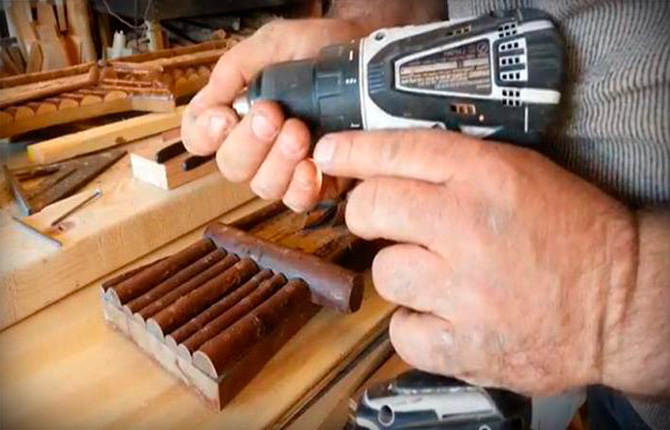
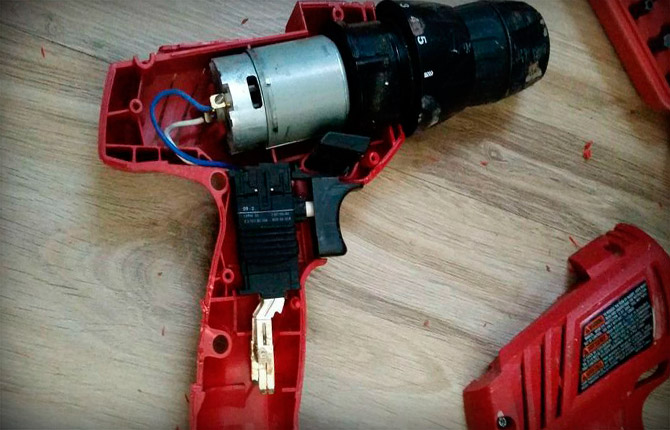
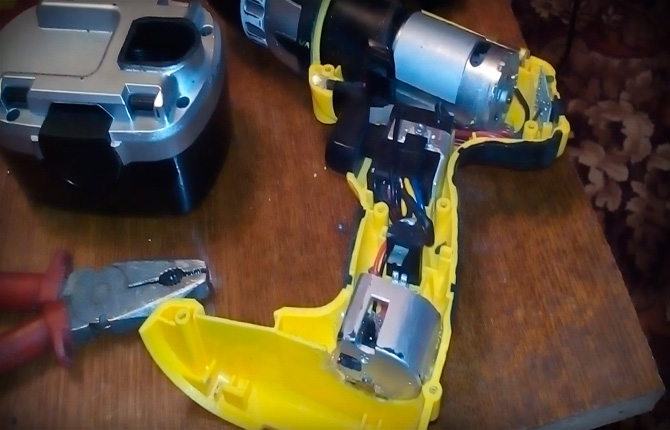
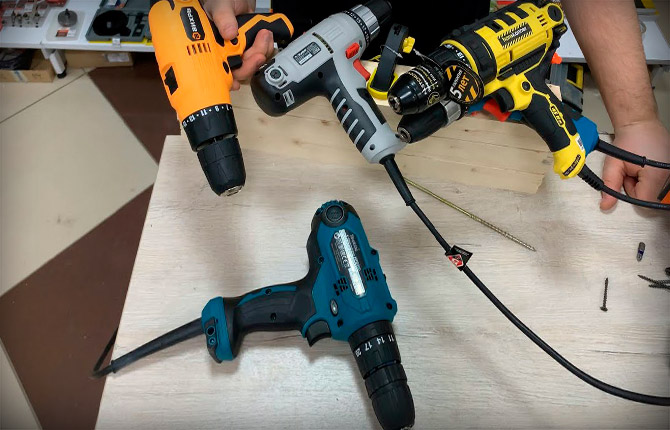
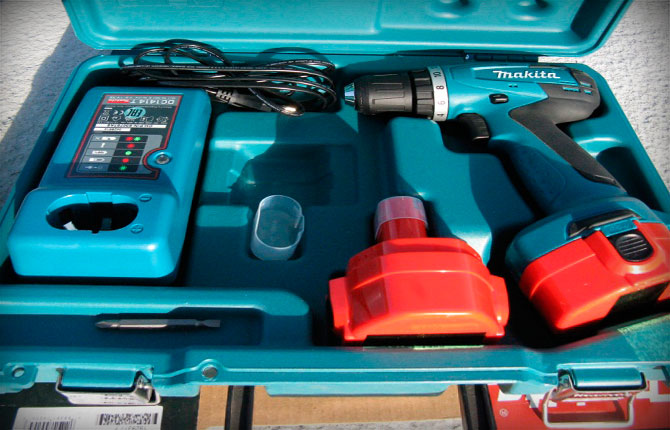
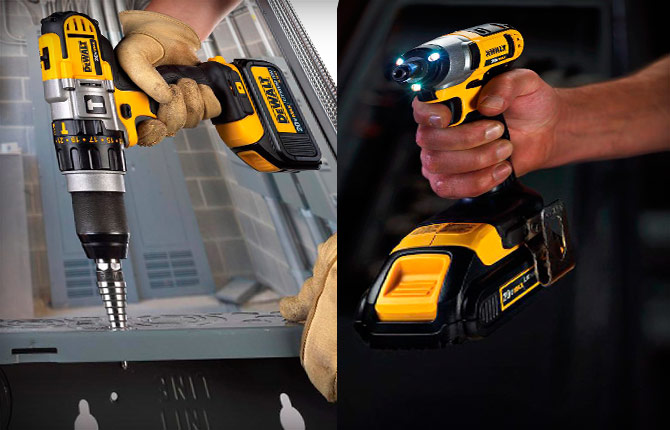
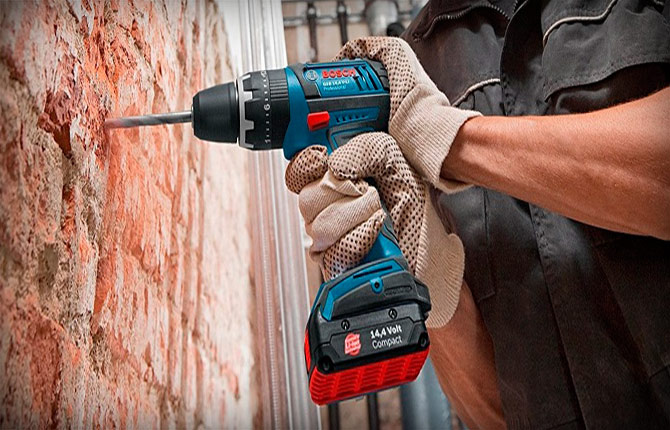
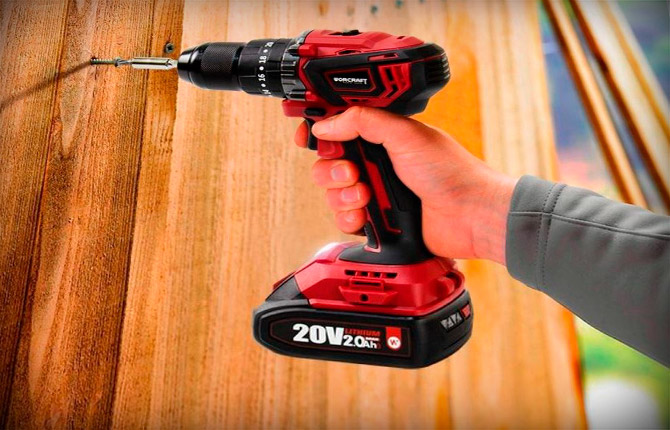
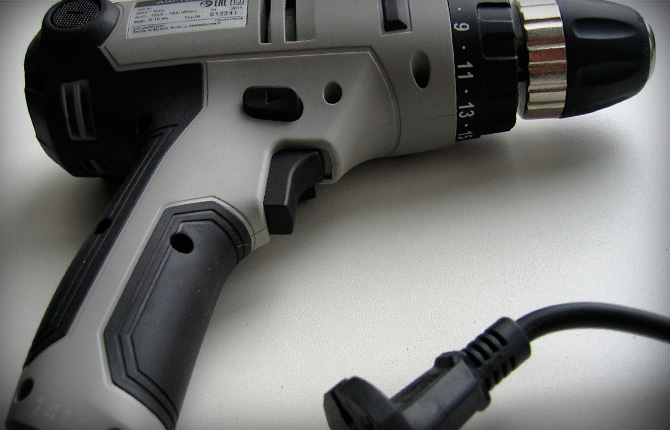

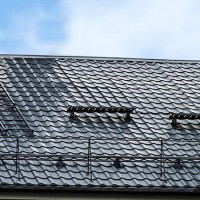



I have been doing renovations for over twenty years. So the battery life in the brigade is up to 10 years, we change the batteries every two years. Network ones die in 2-3 years. So consider it. In general, depending on your luck.
Nowadays it is difficult to buy a good screwdriver. If possible, buy not in salons, but in production. They advised me, I bought it at a construction site, they had a battery one, but there were no batteries themselves. A month later the batteries arrived. The tool has been working for almost ten years.